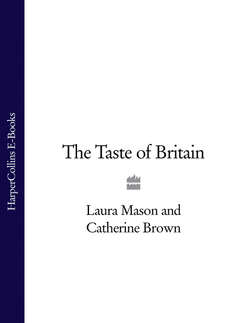Читать книгу The Taste of Britain - Hugh Fearnley-Whittingstall - Страница 34
HISTORY:
ОглавлениеTwo cheeses are associated with Gloucestershire: Double Gloucester, and the less common, lower fat Single (see below). Despite a common heritage, they are separate. The differences of method are subtle and the origin of the terms double and single obscure. They evolved in the late eighteenth century, when the traditional method for making ‘best’ cheese developed into one calling for the whole milk of 2 milkings, or the cream from an evening milking plus the whole milk from a morning milking (Rance, 1982). Double may refer to this use of 2 lots of milk. Alternatively, the terms may have meant nothing more than double being twice as thick as single (Black, 1989).
Gloucestershire, which includes both the Cotswolds and the low-lying land in the valley of the River Severn, has certainly produced cheese for a long time. Rance (1982) states that a regional cheese was exported in the eighth century AD. It is impossible to know what this was like. Fourteenth-century records show a Cotswold manor making cow’s and sheep’s milk cheeses and sending them to the nuns who owned the farm, in Caen in Normandy. If Gloucester cheese did incorporate sheep’s milk, no trace of this habit has been found beyond this isolated record.
Evidence for cheese-making throughout the county during the early modern period can be seen in the tall farmhouses which contain a cheese-room on the third storey; domestic inventories also mention much cheese-making equipment. One area, the Vale of Berkeley, in the south, became very important. Possibly the local Gloucester breed of cattle, whose milk is particularly good for cheese-making, contributed to the excellence of their cheese.
At first, Gloucester was a coloured cheese made from the full-cream milk of a single milking. These were known as ‘best’ until Double Gloucester was recognized as a separate type at the end of the eighteenth century. The cheeses continued to have a high reputation, although disease reduced the population of Gloucester cattle and they were replaced by ‘improved’ breeds from the Midlands. Cheese production became factory-centred in the twentieth century. A little farmhouse cheese survived and renewed interest in old breeds led to the revival of Gloucester cattle and the use of their milk in cheese from the 1970s onwards.
Several folk customs are associated with cheeses in this region. One is the ‘cheese rolling’ on Whit Monday at Cooper’s Hill, between Gloucester and Cheltenham. Four cheeses are rolled down the hill and chased by an assembled crowd. A similar merriment was recorded at Randwick.
